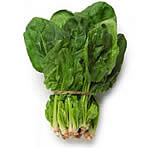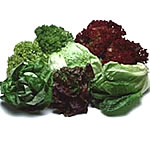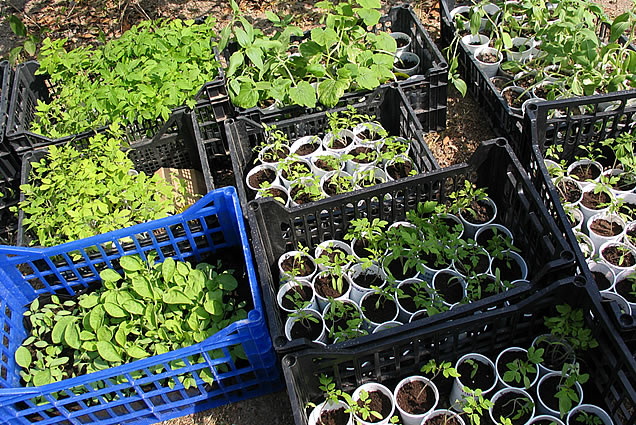Planting a vegetable garden on Aegina
Two wonderful Turkish-derived Greek words for vegetable garden are βαξές (bak-SEH) and βοστάνι (bo-STA-nee). There are many such gardens on the island of Aegina-kitchen gardens planted near houses and larger plots out in fields, summer gardens and winter gardens. With some effort and a little knowledge, it is possible to grow most of one's vegetables year-round here. I am only one of many who find the process both enjoyable and deeply rewarding.
I moved to Greece from northern California where I planted large vegetable and flower gardens on land belonging to neighbors and sold organic produce from them to local restaurants. I ordered seeds from a company in Oregon (www.territorialseed.com) specializing in plants suited to the climate of the Pacific northwest coastal belt with its warmish, rainy winters and its less-than-scorching summers. An astonishing variety of seed is available from this company, as well as from other companies based in various countries. I recall planting up to 15 kinds of lettuce, along with hybrid broccoli developed in the US for 'prolific side-shoot procuction', meaning that after one cuts the main head, the plant keeps putting out delicious and plentiful broccoli for a long period of time. I also grew many greens from Asia for salads, stir-fry dishes, and for boiling, many kinds of squash (called 'courgettes' in England), though the winter varieties are large and variously shaped, intended for baking or soups.
Moving to Greece, I brought seed with me and experimented by planting them in the new climates and soils of Naxos and Aegina, noting the lack of diversity of vegetables sold in the markets here. For example, the main kind of lettuce available was Romaine, though sometimes I saw green butter lettuce and the frilly red Lolla Rossa, and even at the farmers' markets (the Laiki) in Athens, I rarely saw other lettuces, or vegetables like Brussels Sprouts, Asian Greens, or many varieties of squash (just to name a few). In Naxos I did see snow peas, but never any of the wide variety of kales, leafy vegetables in the cabbage family.
I asked friends to send and bring me seeds and also looked on the internet, finding some mail-order companies in the EU similar to Territorial, with vegetable and flower seeds from all over the world, including what are called 'heirloom' plants--plant varieties handed down over the generations but rarely sold by big mainstream seed companies or nurseries. Here's one site I found for such a company: http://www.realseeds.co.uk/kale.html.
Indigenous Greek heirloom seed can be ordered from the organization called www.Peliti.gr, which sends members every spring to various places in Greece, including Aegina, first with seeds marked as to region, which are distributed at Sunday gatherings of local people, and later with seedlings grown from some of these seeds.
Anyone can save seed from desirable plants (with the exception of genetically-engineered seed) if those plants are allowed to flower, thus saving money, and making for very nice gifts. Thus we can all play a role in the perpetuation of fine edible plant varieties.
Here are some of the types of vegetables that do well in winter in Aegina (and in many places in Greece):
 |
 |
 |
|
| Chard (σέσκουλα pronounced 'seskoula') |
Lettuces | Arugula (rocket, roka) |
Green onions (freska kremidia) |
| a very easy plant to grow, and one which reseeds prolifically. Great boiled (but not too much) or used as filling in pitas | (and do check out the enormous variety of these available from mail-order companies in the EU). | ||
| Carrots (karota) | and again, there are many varieties, not just one! | ||
| Kales | Some Greeks have suggested that such exist in Greek gardens, and are called 'laxanidha', though I have never seen curly kale or Russian kale in Greece...yet. | ||
| Asian greens | one great one is called tah sai/tat soi, the smaller leaves good in salads, the bigger ones great in stir-fry or boiled. Check the catalogues for a whole world to open up! | ||
| Potatoes | Indigenous to south America, there are many many kinds to experiment with in Greece. | ||
| Cabbage, broccoli, cauliflower | like kale, all cabbage family (brassica the Latin name). | ||
| Spinach, carrots, radikia | (cultivated dandelion greens for boiling), and winter squashes (planted late summer). | ||
For all of these vegetables, as well as the summer ones, I encourage people to check Peliti for Greek varieties, but also those mail-order catalogues, as many 'Greek' varieties surely came from somewhere else as well as the type of plant in general (including all beans, potatoes, tomatoes, squash, etc. which originated in the Americas.
It must be added here that there is a long tradition of collecting wild winter greens in Greece, in fields and on the mountains, or just along the road you live on... Many of these are in the dandelion family, but not all. I have long meant to get some of the local Greek women who collect these to teach me about these.
Some main summer crops:
| Vlita | a type of amaranth grown in Greece for its leaves, boiled with the more tender stems and served with lemon/vinegar, oil, salt and sometimes garlic. Yum!! | ||
| Tomatoes | |||
| peppers | |||
| eggplants/aubergines | |||
| squashes | |||
| cucumbers | |||
| dill | |||
| basil | |||
| beans | |||
| onions |
Again, there are numerous varieties of all of the above to be checked out. Many people are reluctant to plant from seed, finding it easier to just go buy seedlings from the local nurseries. But once one begins exploring the vast variety of plants not locally available and saving money at the same time, as well as discovering the delights of starting seed in pots or in a 'seed-bed' and giving seed and seedling to friends as gifts, a whole new world opens up.
A note on compost:
Vast quantities of compostable material in Greece are stuffed into big plastic bags and sent off to the landfills. There are at least three main reasons why this is a crime. First...the fertility of the soil is much diminished by the loss of these materials, while people go out and buy commercially produced compost. Secondly, the mass of these materials quickly fills up the landfills, already overflowing with other recyclable materials which constitute much of what people consider trash/rubbish. Lastly: the increase of otherwise recyclable plastic in the landfills (plastic which breaks down very slowly and poisons our soil and water) is outrageous.
Another article will be devoted just to the subject of compost and composting techniques.
I'll end here with a word about watering at ground level rather than in the air. The water of Aegina, especially in its northeastern section, is very salty (and not potable), and leaves of vegetables suffer from overhead watering. If you mulch your plants (place biodegradable matter such as straw or dried out weeds between your plants and then water the mulch and around the roots of your plants, water will be conserved and the plants will stay moist far longer.
Happy gardening!
| Advertisements: | ||


